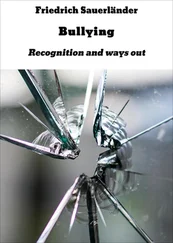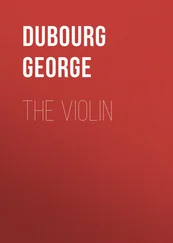George Gemünder - George Gemünder's Progress in Violin Making
Здесь есть возможность читать онлайн «George Gemünder - George Gemünder's Progress in Violin Making» — ознакомительный отрывок электронной книги совершенно бесплатно, а после прочтения отрывка купить полную версию. В некоторых случаях можно слушать аудио, скачать через торрент в формате fb2 и присутствует краткое содержание. Издательство: Иностранный паблик, Жанр: foreign_antique, foreign_prose, на английском языке. Описание произведения, (предисловие) а так же отзывы посетителей доступны на портале библиотеки ЛибКат.
- Название:George Gemünder's Progress in Violin Making
- Автор:
- Издательство:Иностранный паблик
- Жанр:
- Год:неизвестен
- ISBN:нет данных
- Рейтинг книги:3 / 5. Голосов: 1
-
Избранное:Добавить в избранное
- Отзывы:
-
Ваша оценка:
- 60
- 1
- 2
- 3
- 4
- 5
George Gemünder's Progress in Violin Making: краткое содержание, описание и аннотация
Предлагаем к чтению аннотацию, описание, краткое содержание или предисловие (зависит от того, что написал сам автор книги «George Gemünder's Progress in Violin Making»). Если вы не нашли необходимую информацию о книге — напишите в комментариях, мы постараемся отыскать её.
George Gemünder's Progress in Violin Making — читать онлайн ознакомительный отрывок
Ниже представлен текст книги, разбитый по страницам. Система сохранения места последней прочитанной страницы, позволяет с удобством читать онлайн бесплатно книгу «George Gemünder's Progress in Violin Making», без необходимости каждый раз заново искать на чём Вы остановились. Поставьте закладку, и сможете в любой момент перейти на страницу, на которой закончили чтение.
Интервал:
Закладка:
Wilhelmj and other artists have expressed astonishment that a man of George Gemünder's capabilities in this art was to be found in America. Although he enjoys the highest renown in his art, yet he lives in a country in which the appreciation of that art is still in its development; for the number of amateurs such as are found in Europe, who spend enormous sums in instruments, is very small here. The fact is that George Gemünder lives here at too early a period, for his productions are a continuation of those which the great Italian masters brought forth. Taking into consideration all the foregoing circumstances it is fair to suppose that George Gemünder has had to contend with extraordinary difficulties during this long time. For ignorance and arrogance can do much damage, in this respect, not only to the artist, but also to the amateur, as these often times place their confidence in those musicians who have no knowledge of violins, and who can only mislead them.
APPENDIX
GEORGE GEMUNDER'S OBSERVATIONS IN REGARD TO VIEWS WHICH THE MOST OF VIOLINISTS AND AMATEURS HAD OF THE TONE OF OLD AND NEW VIOLINS – HOW THEY IGNORED THE NEW INSTRUMENTS, AND HOW THEY WERE DECEIVED AND SURPRISED IN THEIR PREJUDICE CONCERNING THEM.
Gemünder had learned that the knowledge of arrogant violinists and amateurs in regard to tone did not rest on any correct basis, and that their prejudice rested on a tradition arising from the decline of the manufacture of violins since the death of the celebrated Italian makers. All attempts of late years to make good violins having failed, an aversion to new violins has been gradually spreading, so that the most of people at the present time do not believe it possible for violins to be both new and good. Firstly, because it has been found that new violins have not been constructed so as to possess the tone of old Italian instruments; and secondly, that those made of chemically prepared wood did not stand proof for a great length of time. Many musicians and amateurs have in consequence of this prevailing prejudice gone to an extreme and disregarded new violins, no matter what tone they might have. To this class of people belonged especially the violinist Wieniawski, who had an opportunity to play on one of the best violins made by Gemünder, which opportunity he ignored, because the violin looked new. Instruments imitated by Gemünder were placed before him as genuine violins, and he admired them. Ole Bull was equally surprised when an imitation according to Stradivarius was handed to him in Columbus, Ohio, and he declared it to be a genuine original.
When Vieuxtemps gave concerts in America for the first time, and went to see his friend Vieweg, Professor of music in Savannah, Ga., the Professor showed him his Stradivarius violin. Vieuxtemps, catching sight of it, said: "If he had not been quite sure that his violin was at home, he would think it was his own." But when his friend told him it was a Gemünder violin, he was astonished and observed: "The d***l knows how Gemünder can bring such a tone in new violins!"
At about the same time a violinist came from Germany and visited Gemünder to hear his violins, because Spohr had praised him so much; but at the same time he doubted that new violins could sound like those of the old Italian masters. Gemünder first showed him some having the appearance of being new; the violinist played upon them and then uttered: "They are as I thought; they have not that sweet, melting tone of the Italian instruments." Hereupon he asked Gemünder if he had no Italian violins, in order to show the difference. Gemünder then opened another box, and showed him an imitation of Amati for a genuine one. No sooner did the instrument strike his sight than his face brightened up and he said: "Everybody can see at once that there must be tone in this," and after playing upon it he was so pleased that he said to Gemünder: "Yes, there are none of the present violin makers who have brought it so far!" Hereupon Gemünder informed him that this was also a new violin of his making. Scarcely had the visitor heard this, when, ashamed of his prejudice, he took his hat and went away.
Similar incidents often occur. In 1859 Gemünder sent violins to the Exhibition of Baltimore, after which, on one occasion, he was invited to a soiree at which his violins were played. He also had a genuine Guarnerius among his own instruments. An amateur, Mr. Gibson, a very good player, was present and anxious to hear the Italian violin. During the performance of a quartet on the violins made by Gemünder, this amateur, who was possessed of the popular prejudice against new instruments, and who fancied he heard the Italian violin, was so exceedingly delighted with it that he observed, "To hear such violins is sufficient to keep any one from ever touching new ones." But when Gemünder told him they were new ones made by him, the amateur stared at him as much as to say, "Do you make fun of me? These violins do not look new at all!" Gemünder, however, convinced him of the truth of his assertion. This fact surprised the amateur to such a degree that he was at loss what to say, and later, upon learning the price of one of the instruments, bought it. Sometime after this he valued it at two thousand dollars in gold. Since then the violin has been sent several times to Gemünder, either for a new bridge or other slight repairs, and each time new anecdotes have been related of it. Of especial interest is that one of Father Urso, who was looking for a genuine Guarnerius to give to his daughter Camilla, the celebrated violinist. He took Professor Simon with him to see the instrument. Both were very much surprised at it, not only on account of its undoubted genuineness, but also that it was kept so well. Gemünder then let them know that he had perpetrated a joke, and that the instrument was made by himself.
One day Mr. Poznanski, from Charleston, S. C., in company with his son, who was already an artist on the violin, visited Gemünder. Although still young, his father intended to send him to Vieuxtemps for his further artistic accomplishment, and with this purpose in view he was willing to buy an Italian violin. As Gemünder had none on hand, he showed him a new violin, but Poznanski declared that he would not buy a new one. Gemünder then showed him an imitation, as if it were a genuine original. The son played on it, and both father and son were highly satisfied with it; they expressed their wish to buy it and asked the price, which was given as five hundred dollars. When Poznanski was about to pay down the money, Gemünder told him that this instrument was also new. Whereupon Poznanski replied in an excited tone, "Have you not heard that we do not want a new violin?" and they left the Atelier!
When Vieuxtemps left America, in 1858, Poznanski's son went with him to finish his studies under his direction. After the lapse of eight years he returned an accomplished artist, and visited Gemünder again. He then remarked that he wished to find an Italian violin of first class, and asked Gemünder if he had something of that kind in his possession? Here he took the opportunity to remind Gemünder of the time when he had deceived both him and his father, observing at the same time very naively: "But now, Gemünder, you cannot deceive me. I obtained thorough knowledge of imitations at Paris, and also a knowledge of the genuine Italian violins, for I had an opportunity to see many of those made by the masters." Gemünder told him that he had two Joseph Guarnerius violins of first class in his possession, and laid them before him. Poznanski expressed his astonishment to find such rarities. After a thorough examination Poznanski declared there was no doubt in regard to their genuineness! He tried both violins, and soon evinced his predilection for one of them, which he wished to buy, and inquired the price. Gemünder offered each of them at one thousand dollars, but at the same time told him that he had deceived him for a second time, for the instrument which he had picked out was new and made by himself, whilst the other was genuine. Poznanski, however, told Gemünder that he could not deceive him, that it was not possible to produce an instrument like that. At this moment two friends of Gemünder, who were acquainted with his instruments, entered the shop, and Gemünder asked them in the presence of the young artist, at the same time pointing to the instrument selected by Poznanski, "who made this violin?" They replied that the maker of it was Gemünder. This appeared to him impossible, but, after deliberating on the subject, he said, "I must believe it now, and yet I don't believe it!" A few days later, becoming fully assured that the instrument to which he had taken a fancy was not an Italian violin, he bought the genuine one, which, however, was an excellent instrument, thus giving up the one to which he had first given preference. This is another striking proof of prejudice.
Читать дальшеИнтервал:
Закладка:
Похожие книги на «George Gemünder's Progress in Violin Making»
Представляем Вашему вниманию похожие книги на «George Gemünder's Progress in Violin Making» списком для выбора. Мы отобрали схожую по названию и смыслу литературу в надежде предоставить читателям больше вариантов отыскать новые, интересные, ещё непрочитанные произведения.
Обсуждение, отзывы о книге «George Gemünder's Progress in Violin Making» и просто собственные мнения читателей. Оставьте ваши комментарии, напишите, что Вы думаете о произведении, его смысле или главных героях. Укажите что конкретно понравилось, а что нет, и почему Вы так считаете.












